|
|||||||||
|
ARTICLESThe Heritage of Butter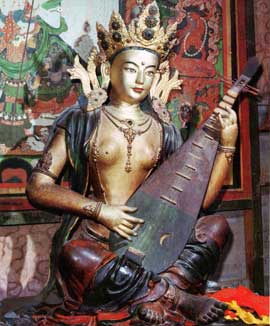 Fig.1 Statue of Goddess of Music (Miaoyin Tiannü) in Ta'rsi monastery, Qinghai province. This and subsequent images in this article are from: Ta'rsi, Xining: Qinghai Renmin Chubanshe,1990, n.p. 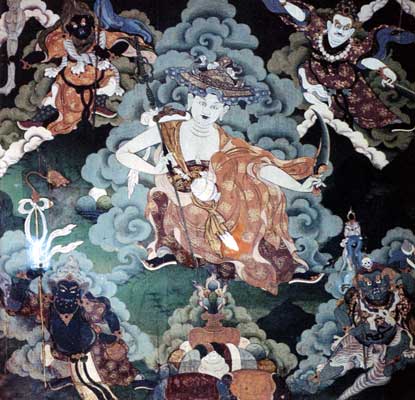 Fig.2 Murals in Xiao Jinwa Dian (Small Gold Tile Hall) at Ta'rsi. Many ethnic groups of China's north-western provinces drink a beverage comprising tea, salt and butter. However, the solidly whipped butter used in Tibetan butter sculptures is an art medium, not a softener for black tea. Tibetan yak butter sculptures, listed as an intangible cultural heritage property nominated by Kumbum monastery (sKu-'bum, also known by its Chinese name Ta'r Si) had its origins not in Tibetan Buddhism but in the Bön religion of the 7th century, according to most scholars. A Tibetan Buddhist legend has it that butter sculptures became votive offerings when butter was carved into flowers make up for the one missing element of the Buddhist 'six offering's'— fresh flowers, perfumes, pure water, incense, fresh fruit and lamps. Kumbum monastery is located in Huangzhong county outside Xining. It was first constructed in 1560. Today, it occupies more than 400,000 sq.m, and includes more than 52 halls and libraries. Although it has more than 9,300 rooms, only about 700 monks live there today. Kumbum monastery has rich collection of sutras, fabrics, thangkas, carpets, votive objects, statuary and carpets. (Figs 1&2) 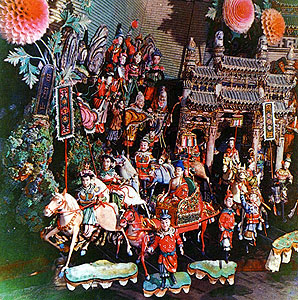 Fig.3 Elaborate butter sculpture on the theme of 'Princess Wencheng Passing Sun-Moon Mountain' in Ta'rsi monastery, Qinghai province. 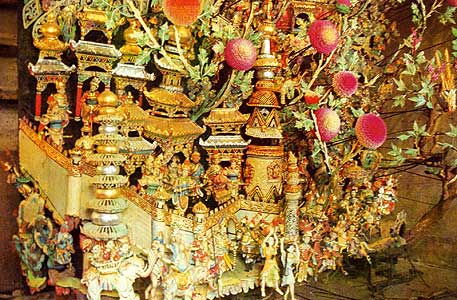 Fig.4 Detail of elaborate butter sculpture on the theme of 'Princess Wencheng Entering Tibet' in Ta'rsi monastery, Qinghai province. Kumbum is now part of the network of Gelug-pa monasteries and temples. The 'folklore' of Kumbum maintains that butter sculpture originated at the time of the inaugural prayer meeting (qiyuan dafa hui) conducted by Tsongkhapa at the Jokhang temple in Lhasa. (Figs 3&4) Almost ten thousand monks are said to have taken part in the gathering. (Fig.5) In the course of the event, Tsongkhapa dreamt one night that he saw thorny briars transformed into lamps and weeds transformed into fresh flowers. The ground between the lamps and flowers was covered with an assortment of remarkable treasures. (Figs 6&7) After waking from his dream, Tsongkhapa immediately organised a group of his followers to shape trees, flowers and the treasures he had seen in his dream and these, together with countless butter lamps, were presented as offerings to the Buddha on the evening of the 15th day of the 1st month of 1409. This is also the date of the Chinese Lantern Festival. [BGD, © Bruce Gordon Doar]  Fig.5 Monk Craftsman at work on elaborate butter sculpture in Ta'rsi monastery, Qinghai province. 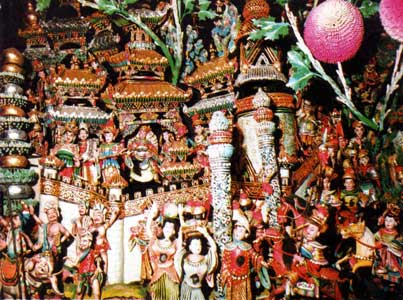 Fig.6 Elaborate butter sculpture on display in Ta'rsi monastery, Qinghai province. 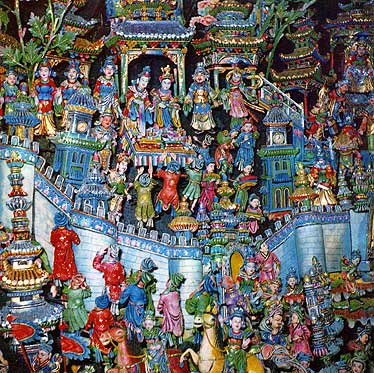 Fig.7 Elaborate butter sculpture on display in Ta'rsi monastery, Qinghai province. |